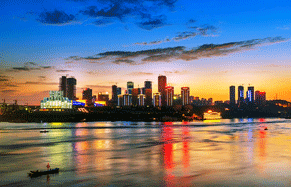Twin ports: Key northeastern belt, road junction gets connected
Investment invitation projects
The Changchun government will release many investment projects during the construction of the two ports, welcoming overseas and domestic companies to invest in Changchun.
The airport intends to gather airline companies’ headquarters in the future by building the required offices, commercial buildings, research and development centers, operational and clearance centers and technical service centers.
Public facilities such as hotels, high-end apartments, hospitals and supermarkets are also included in the plans.
In addition, the new area aims to become a manufacturing base for sectors such as aviation equipment and unmanned aerial vehicles.
The government hopes to attract global aviation equipment manufacturers, including those specializing in design and alternation, via new R&D centers to assist in the production of light fixed-wing aircraft, helicopters and special-function airplanes.
A drone manufacturing base will cover the functions of producing unmanned aerial vehicles, spare parts and related accessories. Companies focusing on producing drones, software research and aftersales services will be welcomed to the new area.
At the airport, air command centers, office buildings and air traffic control systems will be built. Terminal buildings, freight centers, parking aprons for helicopters and light aircraft are also expected.
In addition, the new area will establish a general aviation school focusing on highlyskilled personnel training.
The area is considering recruiting schools set up sub-campuses, while an experience center will provide enthusiasts with private training opportunities.
To achieve this, Changchun government intends to set up an aviation development fund to attract capital and investment from financial institutions, investment firms and social capital.
The construction of Changchun New Area and twin logistics ports needs the support of the whole province, Chinese and foreign experts said, adding that the Jilin provincial government should vitalize the province’s strength to develop the new area.
Policy support and institutional innovation are important for Changchun to develop its new area and build logistics hubs, they also said.
Zhu Ruolin, a professional assessor of city planning with the Ministry of Housing and Urban-Rural Development, also said the airport is an important contributor to Changchun’s economic development, and that the construction process needs support from the provincial government.
According to Zhu, the Jilin provincial government should recognize the power of the airports in leading the regional economy and try to instate preferential policies from the central government.
Wang Yunfang, a professor with the Civil Aviation Management Institute of China, said the construction of inland ports in Changchun New Area would make international trade between Europe and Northeast China more convenient.
Wang suggested Changchun learn from the Shanghai free trade zone’s management experience in investment, finance, service and supervision.
He believes that the Changchun inland ports benefit from new opportunities brought by the Belt and Road Initiative, free trade and the country’s policies for the revitalization in northeastern areas.
The area aims to take advantage of urbanization, the development of the service economy and high-end industries. Changchun's new area is also trying to learn from the successful management of logistics centers around the world. One is the Kansas logistics park in the United States. Located in the center of the US, Kansas is a major transport hub for rails and roads.
Cargo and goods from the western harbors of the US are transported to Kansas by railways, and then distributed to various destinations by road.
Memphis, also in the central US, is another example.
After Fedex settled its headquarters in Memphis in the 1970s and launched cargo airlines here, logistics and distribution industries began to accumulate in the city. Many large companies have established their distribution service centers here.
Dubai free trade zones also provide good examples of connecting trade and industries. Wholesale and retail occupies about 30 percent of Dubai's GDP currently, followed by transport, communication and property.

Scan it!
See more on chinadaily. com.cn














